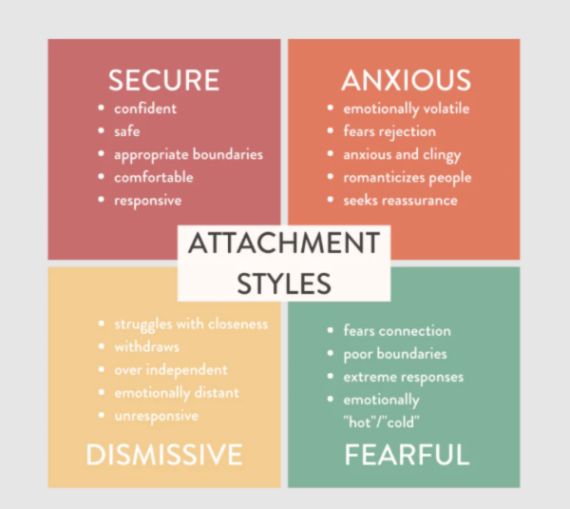John Bowlby developed the Attachment Theory in 1969 but it was tested by psychologist, Mary Ainsworth in the 1970’s with her revolutionary ‘Strange Situation’ study. Children upto 18 months of age participated in the study, and researchers observed how they reacted when they were momentarily separated from their mothers and then reunited.
Ainsworth identified three types of attachment based on the study: secure attachment, ambivalent-insecure attachment, and avoidant-insecure attachment. Later, Main and Solomon (1986) developed a fourth attachment pattern, disorganized-insecure attachmen
Different types of attachment styles:
-
Secure Attachment Style: Secure children express sadness when away from their caregivers and excitement when reunited. They may be sad, but are not worried as they know their caregiver will return. Children who are securely linked feel safe asking their caregivers for assurance when they are scared. This is the most common attachment style.
-
Ambivalent Insecure Style: When a parent leaves, these children become quite upset. These children can't rely on their primary caregiver to be there when they need them because of inadequate parental availability.
-
Avoidant Insecure Attachment Style: Children that have an avoidant attachment are more likely to avoid their caregivers and are unable to differentiate between them and strangers. This attachment pattern may be brought on by abusive or uncaring caregivers. Children who are punished when asking for reassurance from a caregiver will learn to decline assistance in the future.
-
Disorganised Insecure Style: These children behave in a perplexing manner. They might shun the parent or fight back. Inconsistent caregiver conduct is probably related to a lack of a distinct attachment pattern. In such circumstances, parents could act as the child's source of solace and terror, resulting in disorderly behaviour.
Attachment styles influencing adult relations:
Early attachments can seriously affect subsequent relationships, even though adult attachment styles aren't always the same as those exhibited in infancy. Adults who experienced safe attachment as children often have high self-esteem, satisfying romantic connections, and the capacity to open up to others. Whereas, attachment issues are typically seen in children who have been diagnosed with oppositional defiant disorder (ODD), conduct disorder (CD), or post-traumatic stress disorder (PTSD), possibly as a result of early abuse, neglect, or trauma.
Crticisms of the Attachment theory:
The fact that non-Western nations frequently present strong counter-examples to attachment theory is one of the strongest criticisms of it. For instance, childrearing responsibilities are more equitably distributed among more people in Papua New Guinea or Uganda, where the concept of a child being intimately tied to a caregiver is relatively foreign. However, they are able to produce "well-adjusted" members of society which suggests that, some other mechanism is working in place of the attachments styles in those regions.
The propensity to make strong emotional bonds to particular individuals is a basic component of human nature and to learn about how we are attached to other humans is a powerful tool to navigate through relationships.
Article by Sanjana Tandon (MA Clinical Psychology)- 22nd December'22

